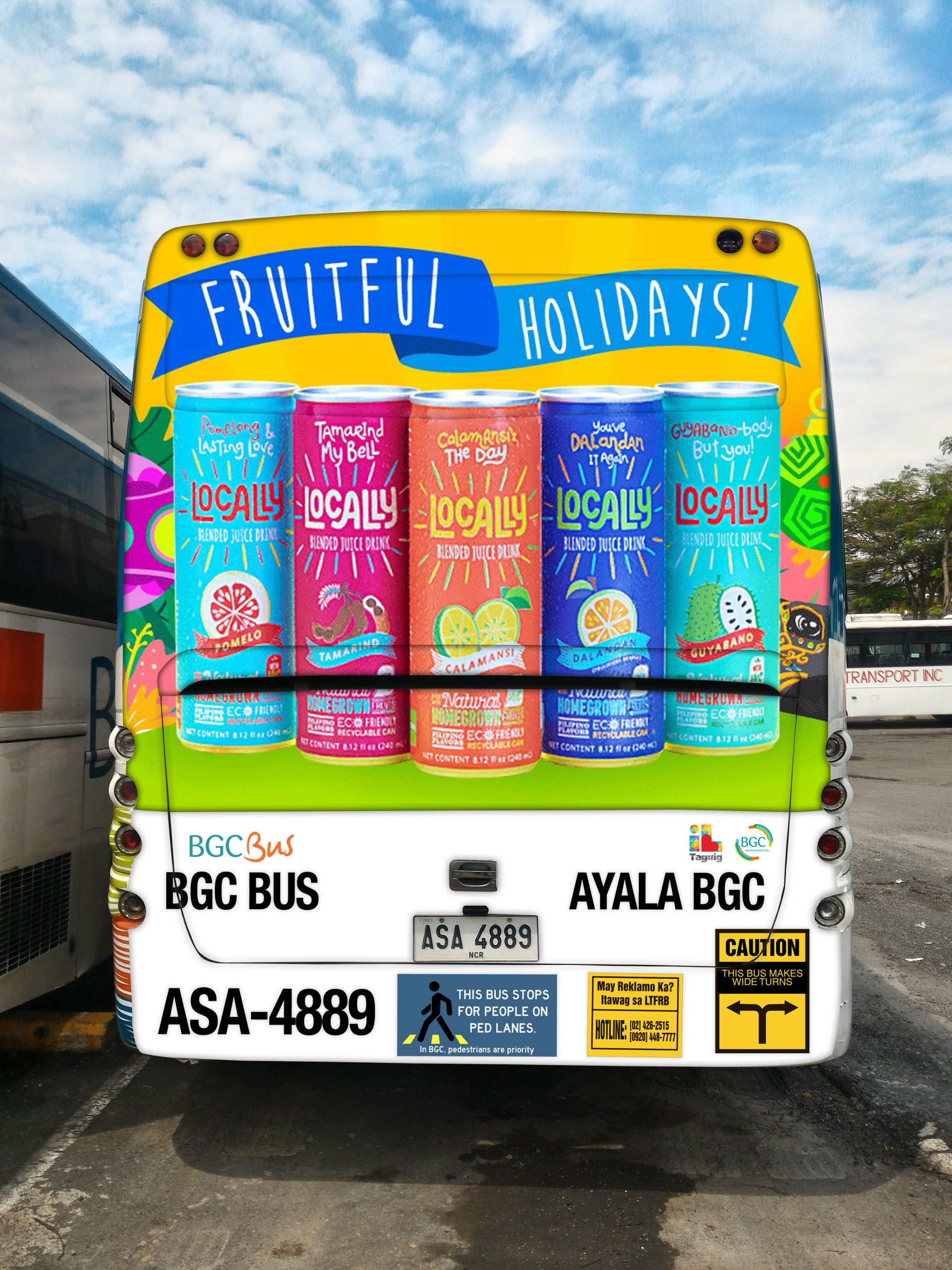Exploring the Effect and Efficiency of Transportation Advertising in Urban Marketing Strategies
Transit advertising and marketing has actually come to be a considerable component of urban advertising methods, maximizing the one-of-a-kind characteristics of public transport environments. Its capacity to reach a varied and wide target market offers brands with an opportunity to create significant links via constant presence. However, with the quick development of modern technology and moving customer actions, the landscape of transportation marketing is undertaking noteworthy modifications that warrant closer assessment. What effects do these patterns hold for online marketers seeking to harness the full possibility of this tool?
The Increase of Transit Advertising And Marketing
As urban populaces proceed to swell, the demand for innovative advertising services has brought about the surge of transit marketing as a pivotal part of city advertising approaches. This type of advertising and marketing leverages public transportation systems-- such as subways, buses, and trains-- to get to a diverse audience in densely inhabited locations. The efficiency of transit marketing hinges on its ability to involve customers during their daily commutes, a commonly neglected yet important time for brand messaging.
With cities coming to be increasingly busy, traditional advertising spaces are ending up being limited and less efficient. Transit marketing uses a vibrant choice, making it possible for brands to showcase their messages in high-traffic areas where potential customers are consistently revealed to the ads. In addition, as metropolitan citizens increasingly depend on public transport, the importance and visibility of transportation advertising and marketing have expanded significantly.
Additionally, technical advancements have actually boosted the class of transportation marketing, enabling digital display screens and interactive campaigns that can catch consumer interest a lot more successfully than static advertisements. As a result, transportation advertising and marketing is not only an affordable alternative however likewise an essential method for brand names seeking to connect with urban customers in a memorable and impactful manner.
Key Advantages of Transportation Marketing
The efficiency of transportation advertising and marketing is highlighted by its complex advantages, making it an invaluable device for city marketers. Among the primary benefits is its comprehensive reach; transit systems offer numerous passengers daily, allowing brands to connect with a diverse audience in high-traffic settings. This visibility boosts brand name awareness, making certain that promotions are seen consistently by commuters.

Additionally, transportation marketing is affordable compared to other media, offering a reduced cost per impact while preserving high exposure. The versatility of advertisement styles, from bus wraps to digital screens, enables for impactful and imaginative projects that can adjust to altering market demands.
Consumer Actions Insights
A considerable part of consumer actions is affected by the pervasive nature of transportation marketing in metropolitan atmospheres. This type of advertising and marketing catches the attention of diverse demographics, engaging customers throughout their daily commutes. As people navigate dynamic cityscapes, they encounter transportation advertisements in different styles, including bus wraps, train posters, and digital displays. The strategic positioning of these ads takes full advantage of exposure, thereby enhancing brand name recall.
Research indicates that transportation marketing can stimulate psychological responses, causing increased brand name fondness. Consumers frequently link the experience of travelling with certain brand names, developing an enduring perception that influences investing in choices. In addition, the regularity of exposure to transit ads cultivates familiarity, which is an essential consider consumer count on and commitment.

In addition, the communal aspect of public transport adds to this phenomenon; as individuals share spaces, they are more probable to talk about and advise brands they encounter. Therefore, transit advertising and marketing not just gets to consumers but likewise stimulates social interactions that enhance brand name messaging. Comprehending these behavioral understandings allows marketing professionals to customize their strategies properly, ensuring that their projects reverberate with target market in the city landscape.
Study and Success Stories
Successful application Get the facts of transportation advertising techniques is exemplified through various study that highlight its efficiency in urban advertising. One noteworthy instance is the collaboration between a preferred beverage company and a significant city's public transit system. The project made use of bus wraps and interior posters, causing a 30% boost in brand name recognition and a 15% rise in sales within the target group over three months.
An additional effective situation involved a regional dining establishment chain that utilized train terminal marketing to draw in commuters. By creating aesthetically striking advertisements that supplied timed promos, the dining establishment experienced an uptick in foot traffic, with an excellent 25% boost in lunch hour patrons.
Moreover, a city's tourism board launched a transit campaign showcasing regional tourist attractions with bus stop display screens and train ads. The initiative brought about a considerable boost in visitor gos to, as reported by a 40% increase in queries at site visitor centers.
These study highlight the versatility and possibility of transit marketing to engage look at more info urban audiences effectively, demonstrating that tactical positionings can yield substantial returns on investment and boost brand name visibility in busy urban atmospheres. - Transit Advertising Philippines
Future Patterns in Transit Advertising
As urban landscapes continue to develop, so too does the world of transit advertising, which is positioned to welcome cutting-edge technologies and strategies. One substantial trend is the integration of electronic advertising displays into public transit systems.
An additional arising pattern is using enhanced fact (AR) and online reality (VR) experiences within transportation advertising and marketing. These immersive modern technologies can mesmerize travelers, changing mundane trips into interactive brand name experiences. In addition, sustainability is coming to be significantly important; eco-friendly advertising and marketing materials and practices are most likely to get traction, showing the expanding consumer demand for business social duty.
Lastly, the rise of mobile connection will assist in better combination between transportation advertising and individual devices. Marketers can develop seamless cross-channel experiences, enabling prompt communication and engagement with prospective customers. Jointly, these patterns suggest a transformative future for transportation advertising, providing new methods for brand names to connect with city audiences.
Verdict
Transportation advertising has actually established itself as a substantial component of urban marketing techniques, showing significant performance through enhanced brand name visibility and consumer interaction. The capacity to adapt messages to certain demographics, paired with the ingenious usage of innovation, positions transit advertising as a driving read this article force in contemporary advertising and marketing (Transit Advertising Philippines). As city settings continue to advance, the future of transportation marketing guarantees additional developments, guaranteeing its importance and effect in shaping consumer understandings and behaviors in city landscapes
As city populaces continue to swell, the demand for ingenious advertising solutions has actually led to the rise of transit advertising as a critical part of metropolitan advertising and marketing strategies.A significant portion of consumer habits is affected by the pervasive nature of transportation marketing in urban atmospheres. Jointly, these fads show a transformative future for transportation advertising and marketing, using new avenues for brand names to attach with metropolitan target markets.
Transportation marketing has established itself as a substantial part of urban advertising strategies, showing substantial performance with boosted brand exposure and customer involvement. As metropolitan settings continue to develop, the future of transportation marketing guarantees more improvements, guaranteeing its importance and impact in forming consumer assumptions and habits in city landscapes.